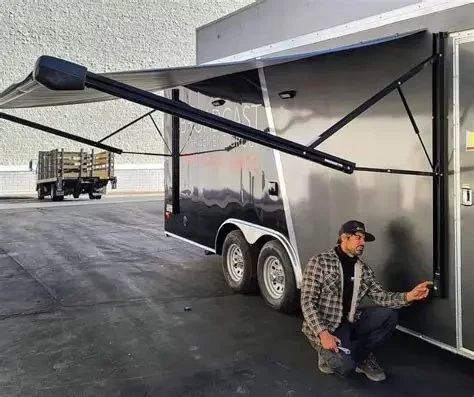- 1 - Importance of RV Awning Maintenance
- 2 - Must-Have Cleaning Tools
- 3 - Repair Tools and Supplies
- 4 - Preventative Maintenance Equipment
- 5 - Real-World Examples and Maintenance Stories
- 6 - When to Seek Professional Assistance
1. Importance of RV Awning Maintenance
An RV awning isn’t just a shade—it’s a valuable piece of equipment that enhances your comfort during travels and protects you from the elements. However, without proper maintenance, an awning can deteriorate quickly due to weather, dirt buildup, and mechanical wear. Maintaining it ensures a longer lifespan, better appearance, and fewer costly repairs down the line.
Many RV owners overlook awning care until a sudden tear or mold problem appears. Just like the roof of your RV, regular upkeep is essential to avoid unexpected inconveniences during a trip.
2. Must-Have Cleaning Tools
Keeping an awning clean is the first step in preventing damage. A soft-bristle brush is a must to remove dirt without scratching the material. For mildew, a gentle cleaning solution—preferably designed for awning fabrics—helps remove stains without weakening the fibers. A sturdy extendable cleaning pole can make the process easier, especially for taller RVs.
One RV traveler shared how skipping monthly cleaning led to stubborn mold stains that required professional treatment. Investing in proper cleaning tools early can save hundreds of dollars later.
3. Repair Tools and Supplies
No matter how careful you are, accidents happen—a sudden gust of wind, a snag from a nearby branch, or a mechanical issue can damage your awning. Every RV owner should carry a repair kit that includes fabric patch tape, a seam sealer, and a small tool set for tightening hardware. A handheld drill with the correct bit sizes can be invaluable for quick frame adjustments.
Having these tools on hand means you can fix minor issues before they turn into major replacements, keeping your trips smooth and stress-free.
4. Preventative Maintenance Equipment
Prevention is just as important as repair. Protective awning covers shield the material from UV rays when not in use, while waterproofing sprays keep the fabric resilient against rain. Lubricants for moving parts, such as silicone spray, ensure the arms and joints operate smoothly without corrosion.
Simple steps—like applying a UV protectant every few months—can drastically extend the life of your awning. It’s a small investment with a big payoff in durability and appearance.
5. Real-World Examples and Maintenance Stories
Consider the story of a couple who frequently traveled to Pine Cliff Resort. Their first trip was cut short when a loose awning bolt jammed the mechanism. After that incident, they built a portable awning toolkit that included a wrench set, spare bolts, and cleaning gear. Since then, they’ve enjoyed hassle-free vacations with a perfectly functioning awning.
These kinds of real-world experiences show that being prepared not only saves money but also protects your time and enjoyment on the road.
6. When to Seek Professional Assistance
While many maintenance tasks can be handled by RV owners, there are times when calling a professional is the best choice—such as structural frame damage or severe mold contamination. Skilled technicians can ensure the repair is done correctly, preventing further issues.
If you’re unsure about a repair, consulting experts can provide peace of mind and extend the life of your awning. With the right combination of DIY care and professional help, your RV awning can stay in top shape for years to come.







